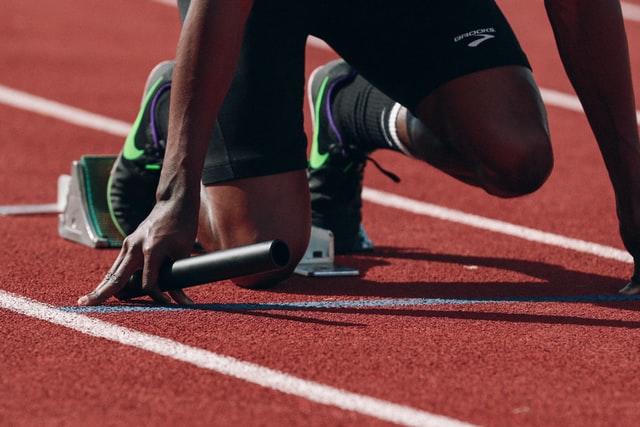The word doping in the world of professional sport has become a well know negative connotation that most athletes hope they will never be associated with their names.
Most would agree that doping in sports is a bad idea, so then why do athletes take the risk to do it?
Firstly, we know that there are laws against doping in sports, however, let’s take a closer look at the extent of drugs in sport as this is often inaccurately reported.
Often, we’ll hear about the athletes who got caught taking performance-enhancing drugs, but we seldom hear about all the other athletes who were scheduled to compete in the same event who didn’t fail a sport doping test.
Back to the question, why do athletes risk-taking performance enhancing drugs?


The Pressure to Take Performance Enhancing Drugs
Many athletes believe they are forced to participate in sport doping. Are you aware of Game Theory?
This is philosophy posits that athletes will choose their strategies based on the strategies they believe their opponents will deploy. Of course, this is where things get interesting.
Studies show that when athletes first confront each other – whether that is on the pitch, across the net or in the ring, they have not yet had the opportunity to communicate.
This strategy begins with a spirit of cooperation where one player mirrors the other. However, the more players or individual athletes there are and the longer the game goes on, instead of building trust, somehow betrayal ensues.
Athletes usually know each other well, at least well enough to know when the other is using performance enhancing drugs. This makes them feel pressure to use drugs in sport themselves even though there are laws against doping in sports. They feel the pressure to meet their opponents on the level that they are at or suffer a disadvantage.
The circle continues and everyone feels under pressure to engage in sport doping.
The question is how are these athletes not worried that doping in sports will ruin their careers?
Dopers Are a Step Ahead
Quite simply, professional athletes are well aware of the laws against doping in sports.
Firstly, the types of drugs in sport are multiplying. Gone are the days when all the testers had to look out for were traces of testosterone and anabolic steroids.
Modern sport doping techniques are rather sophisticated. They can be as radical as athletes having their own blood drawn and then re-injecting it just before an event. Believe it or not, this can significantly boost sporting performance.
Science works far harder to find ground-breaking ways to use undetectable drugs in sport than it does to establish testing methods for discovery. This makes it unlikely that testing methods will ever catch up to the many ways of tricking doping tests. Blood thinning and masking agents are two common, yet sophisticated techniques to get around the laws against doping in sports.
For competitive athletes who generally don’t mind taking risks and are competitive by nature, the fact that anti-doping measures are so random suits them.

Performance Enhancing Drugs Work
There is nothing to excuse using drugs in sport, but from an athlete’s perspective, the reasons may sound a little more understandable. Their main reason? Doping does work.
Generally, athletes who dope do not generally offer themselves for scientific experiments, however, research on small groups of non-professionals has been illuminating. For instance, when EPO which is a blood booster, is used in conjunction with the blood drawing and reinjecting technique it can boost performance by 10%.
When you consider how close some results are, many separated only by a fraction of a second, then a 10% boost almost makes breaking laws against doping in sports, worth it for some.
So now that we know how athletes go about doping, let’s take a look
Now that we know why athletes dope, let's take a closer look at doping in more detail.
When Did Doping Begin?
It will probably surprise you to learn that the Ancient Greeks and early Olympians were the first to dope. Around 300 BC, sheep’s testicles were consumed to gain a boost of testosterone ahead of a competition. Interestingly, this was not down on the sly, but it was encouraged!

Further records of doping were noted more than a millennium later:
- 1904: Thomas Hicks took two strychnine injections from his trainer during a marathon race and won the race.
- 1928: The International Association of Athletics Federation decided to ban doping even though they knew that they had no way to enforce such a ban.
- 1954: A physician working for the US team discovered that the USSR weightlifters had been boosted with testosterone. Not long after, US weightlifting teams began taking anabolic steroids.
- 1966: Athletes at the European Athletics Championships were drug tested for the first time.
- 1988: Olympic sprinter Ben Johnson lost his gold medal after he tested positive.
- Somehow, Carl Lewis received the medal instead even though he also tested positive for dope.
- 2012: Lance Armstrong was stripped of all of his titles and every award since 1998.
- 2015: Russian athletes were banned from international events as a result of state-sponsored cover-ups.
In 1976, the first test was developed where scientists could positively identify anabolic steroids making it possible to enforce the banning of these substances at Olympic events for the first time. Not unlike the politics found in football, there were a few objectors but not enough to vote the rule out.
Besides, by that time, many other types of doped had found their way into the veins of athletes.
Types of Doping
So far, we've mentioned strychnine (a very dangerous type of drug that (hopefully) is not used anymore) as well as anabolic steroids and testosterone We've mentioned EPO and blood doping which is the process of re-injecting one's own blood right before and event to boost performance.
What other types of dope are there?
Amphetamines like ephedrine and caffeine can stimulate the central nervous and cardiovascular systems. These also help athletes to stay focused and alert.
Anti-inflammatories and Estradiol fit in a similar category to testosterone and anabolic steroids. These drugs are commonly used during training to build power, strength and speed. There are also narcotics like heroin, methadone, cocaine, and morphine used post-workout for the body to relax.
Growth hormones like somatotropin are known to increase muscle mass. Ever since 'roid rage' burst into the news with stories of people taking steroids who were unable to control their anger, these doping hormones have become popular with bodybuilders.
Beta-blockers can lessen anxiety and lower heart rate and relax the muscles. Some chess players have been known to take a beta-blocker ahead of a major tournament. Diuretics are another common medicine used by wrestlers and judokas and wrestlers to reduce body weight.
Finally, the enigmatic EPO actually stands for erythropoietin. It is a glycoprotein cytokine that encourages the production of red blood cells. The cytokine which is made naturally in the bones of the body constantly makes red blood cells. However, the stimulation of excess production can have dire consequences, that include strokes, heart attacks, blood clots and even death.
Using a complex system of EPO and other blood doping procedures is what caused Lance Armstrong, the seven-time champion of the Tour de France to be stripped of all his honours, prizes, titles and recognition that he gained throughout his career.
He is not even allowed to participate in sporting politics now.

Doping Controversies
Earlier in this article, we mentioned how Russian teams were banned from international events. This was less to do with the number of athletes that had been doped and more about the Russian authorities who had tampered with the laboratory tests.
It was an unusual case of condemnation where an entire contingent of athletes was held accountable. Fortunately, in the end, the (WADA) World Anti-Doping Agency relented on its 2015 decision and allowed Russian athletes who had clean records to compete.
There have also been devastating stories for athletes who had no intention of deliberately doping. In 2016, Maria Sharapova was on her way to tennis stardom when she was called out for a drug used to regulate metabolism and protect her heart. Unfortunately for the tennis player, WADA had only banned that particular drug two months before due to its performance-enhancing side effects.
Similarly, Norwegian hockey player Nicklas Backstrom was suspended only hours before he was scheduled to play in the 2014 Winter Olympics. The reason? A positive pseudoephedrine test. Apparently the fact that his coach had submitted paperwork to say that it had been legitimately administered was overlooked.
And then of course there is the bizarre case of the Russian skater Kamila Valieva who at only 15 years old was said to have been unlikely to have access to dope. That decision was heard all around the world, the skater was absolved of any wilful foul play and allowed to continue to compete.
The controversy surrounding her gold medal puts her future as a professional skater at risk. Nevertheless, she remains one of the many admirable women in sports competing today.















